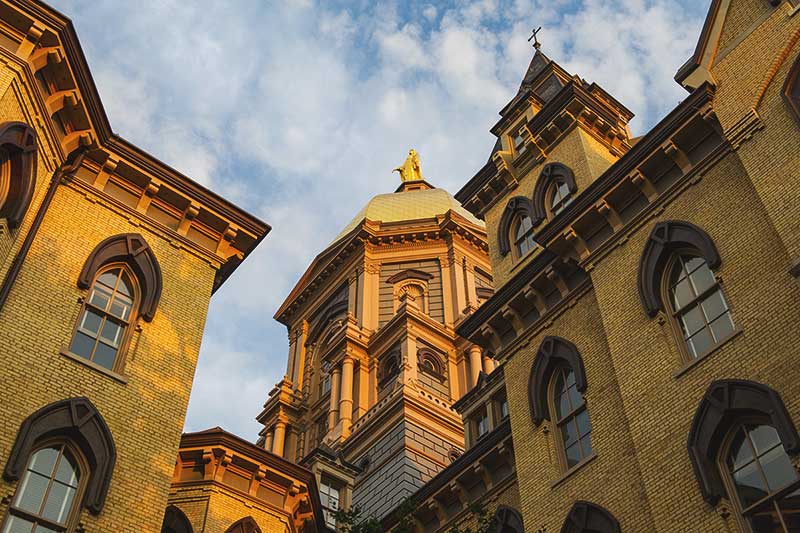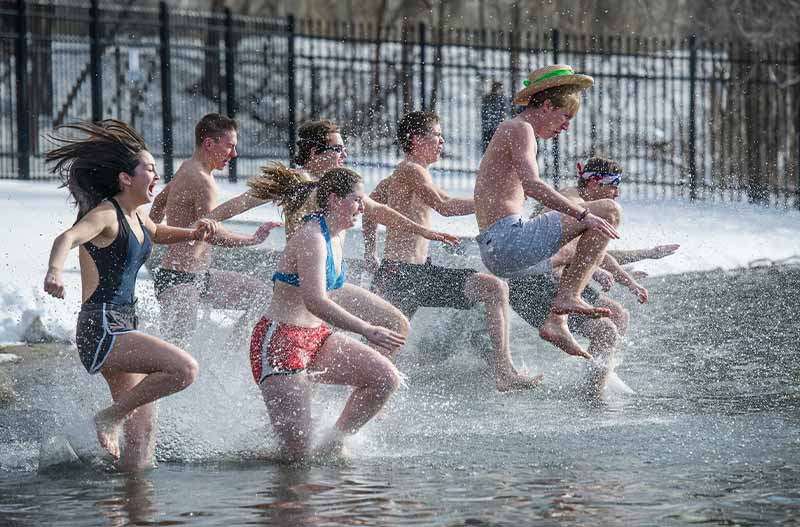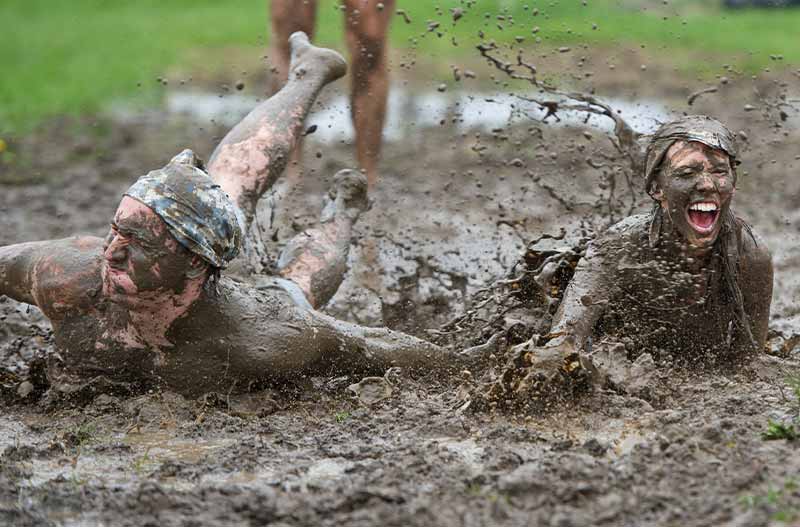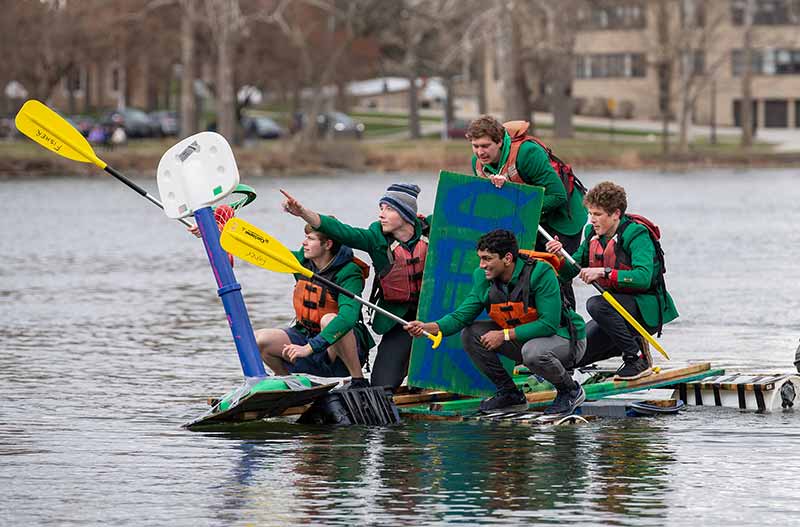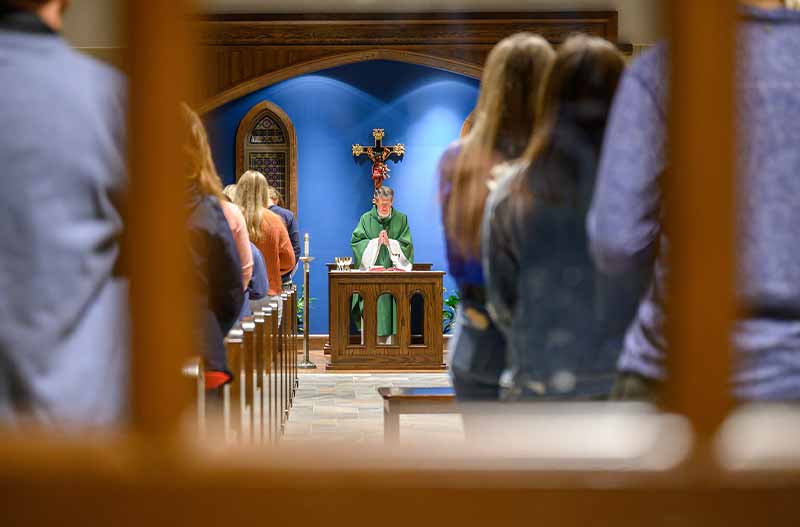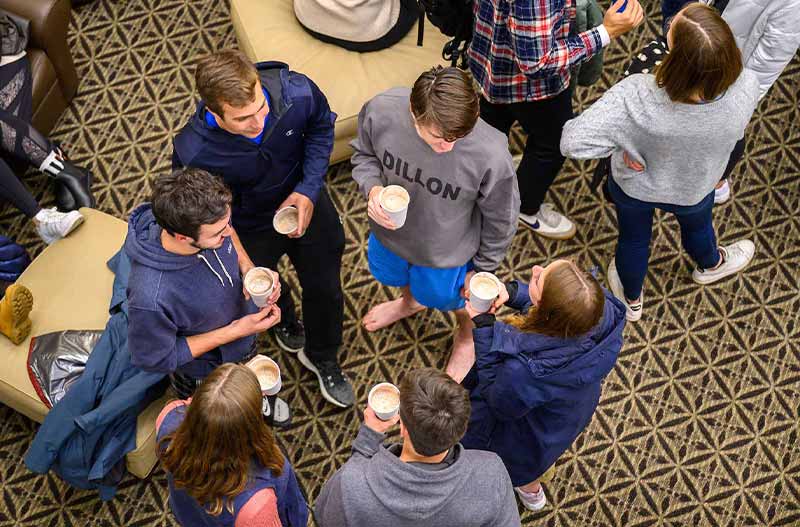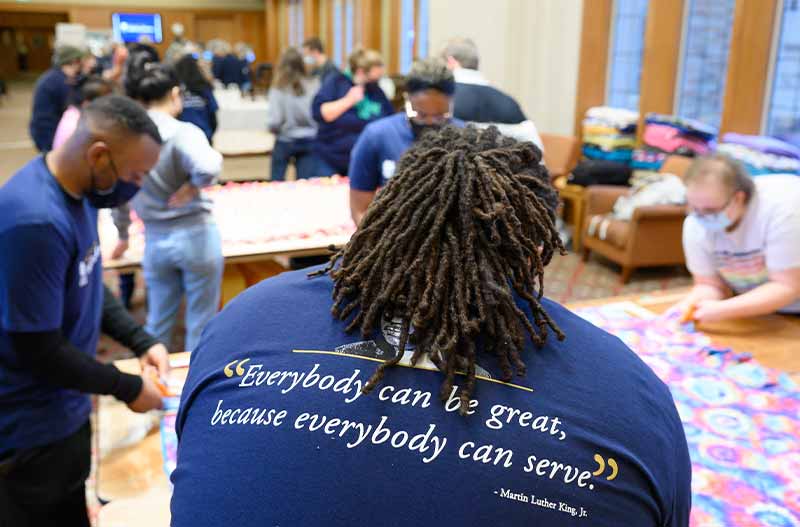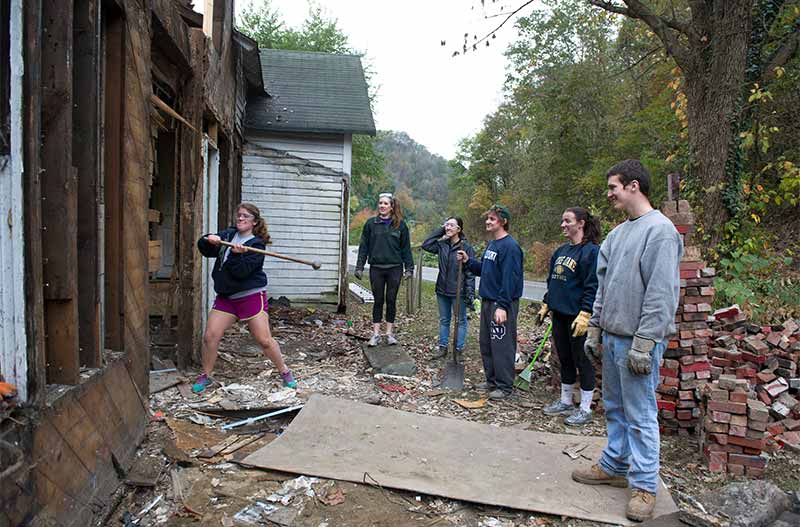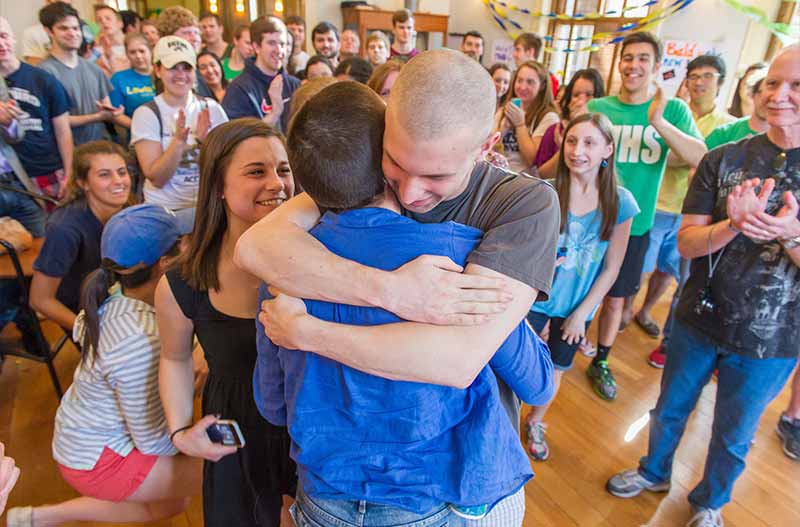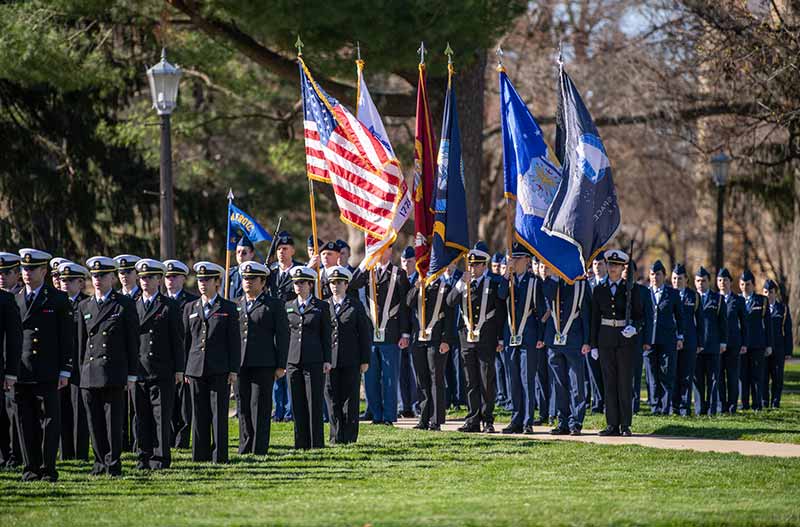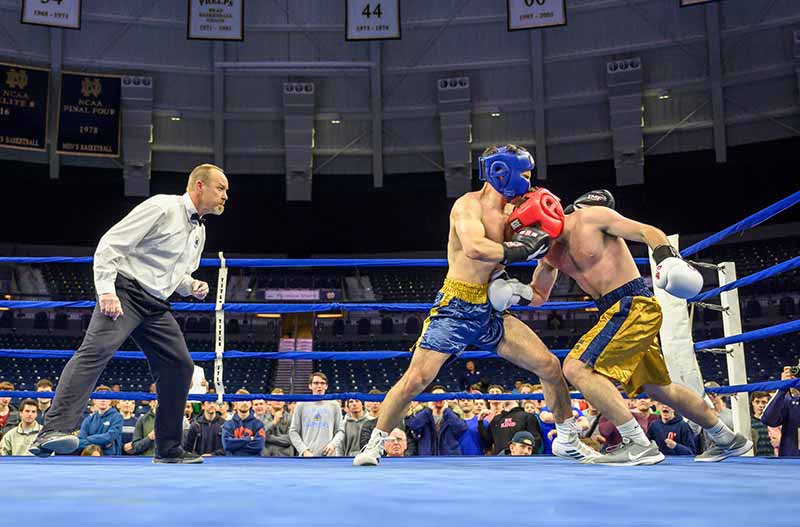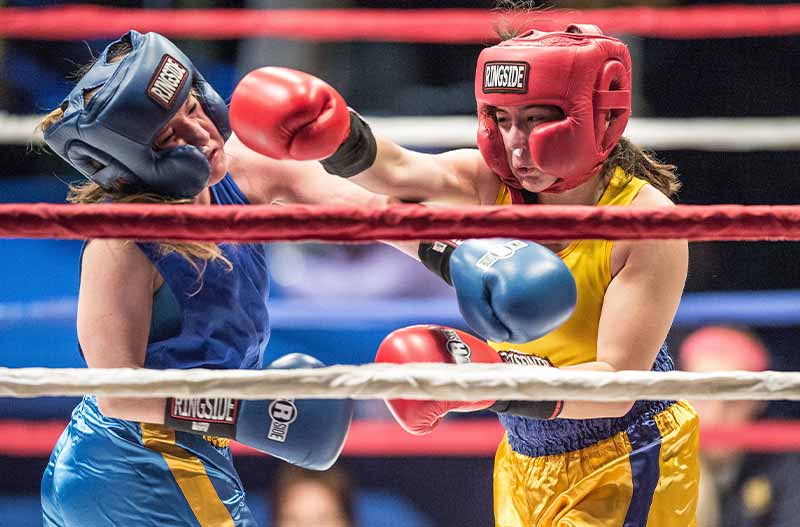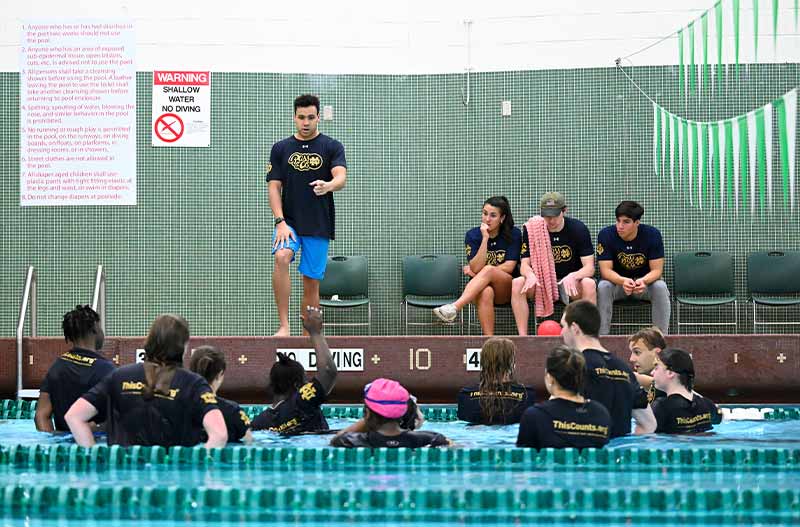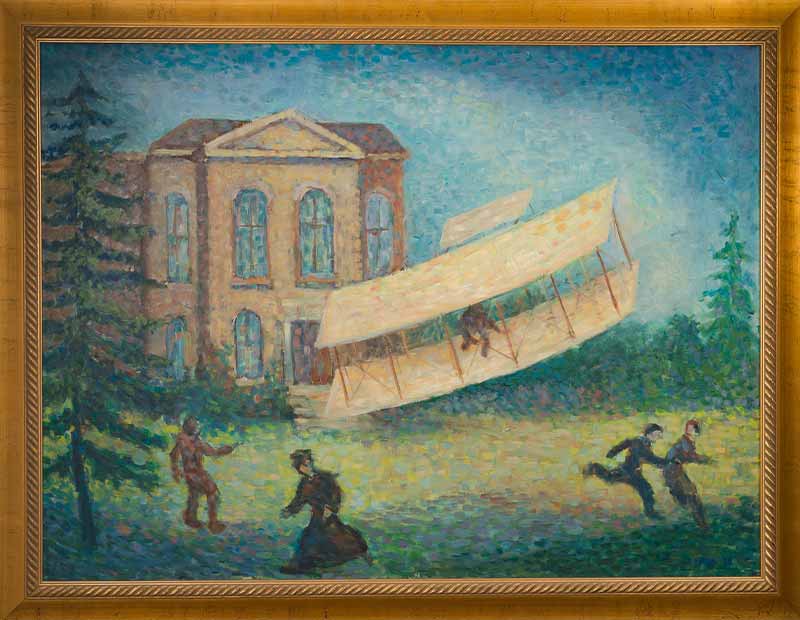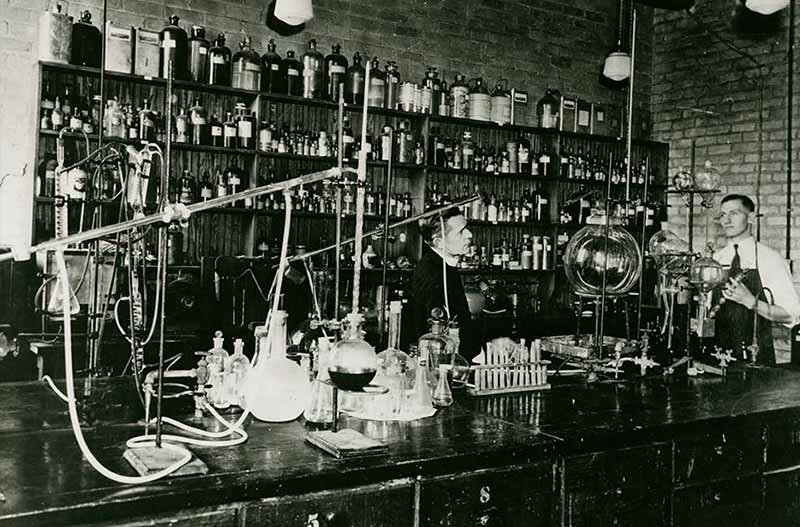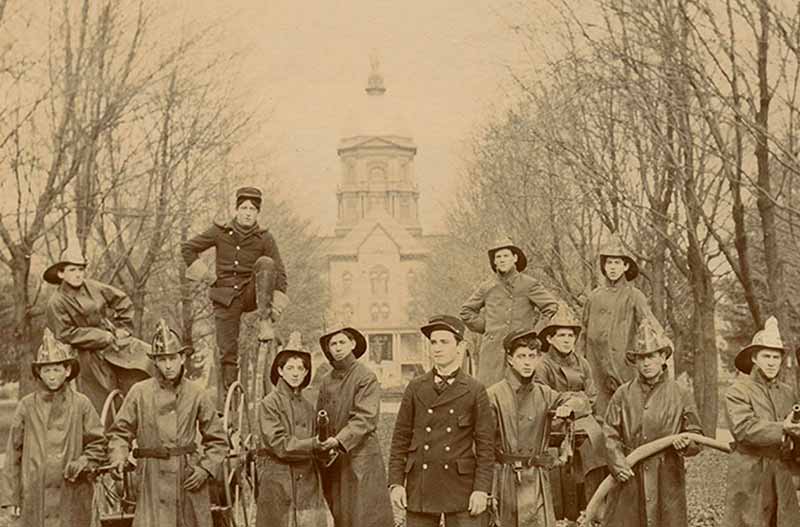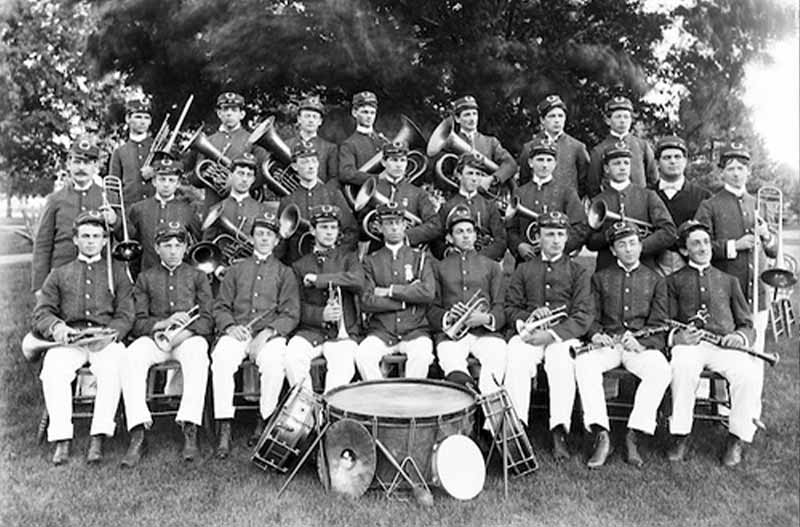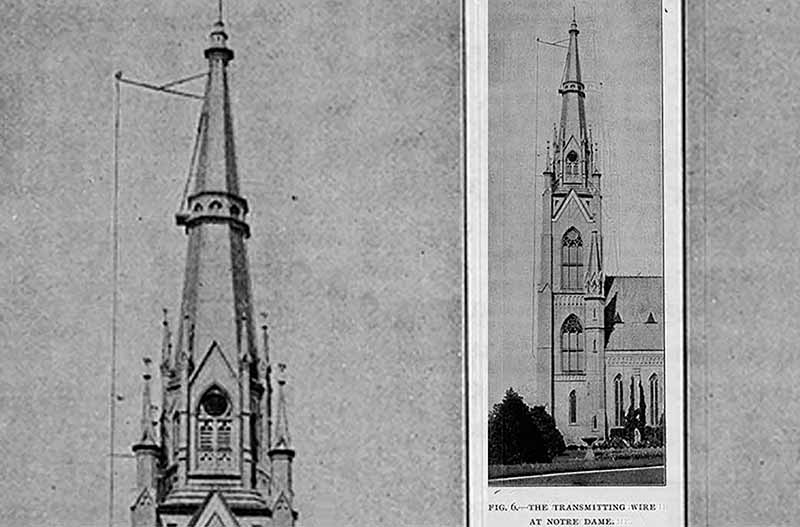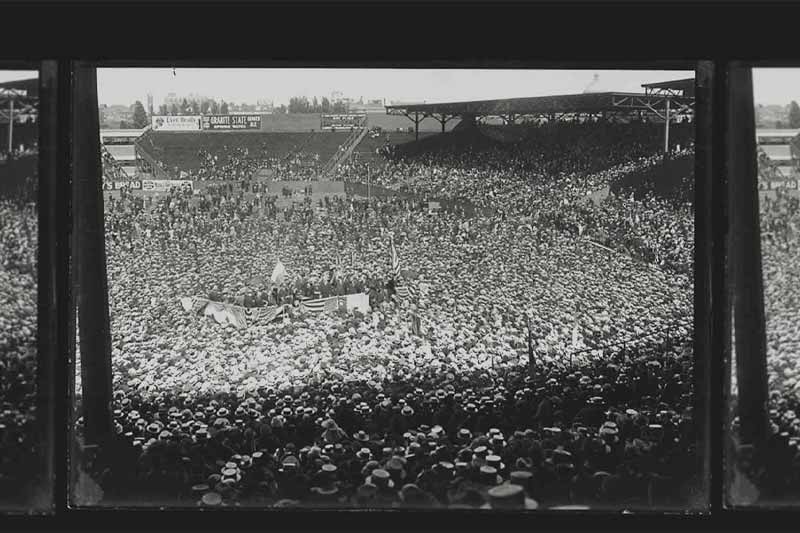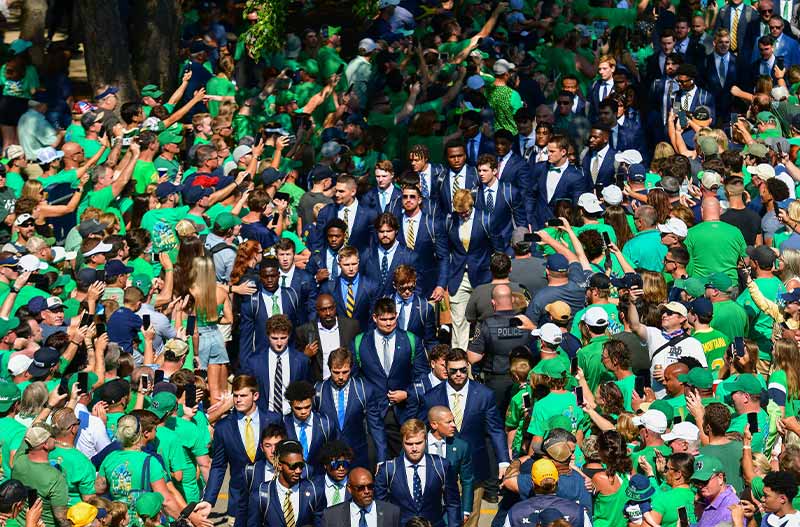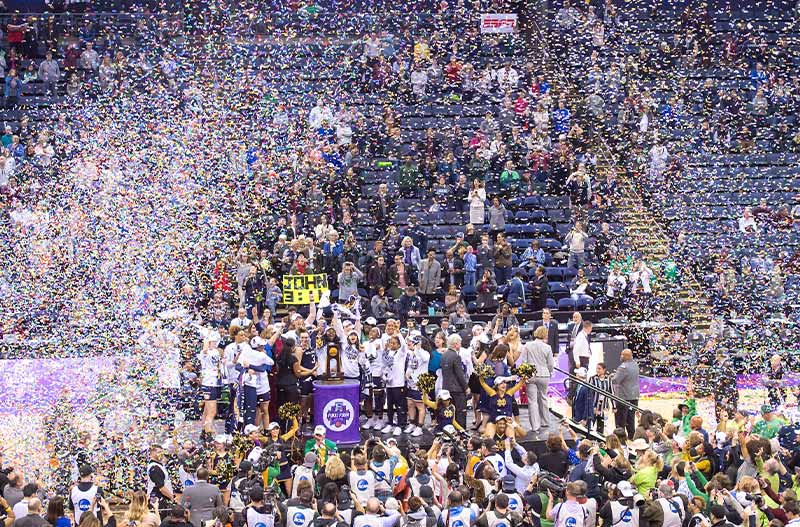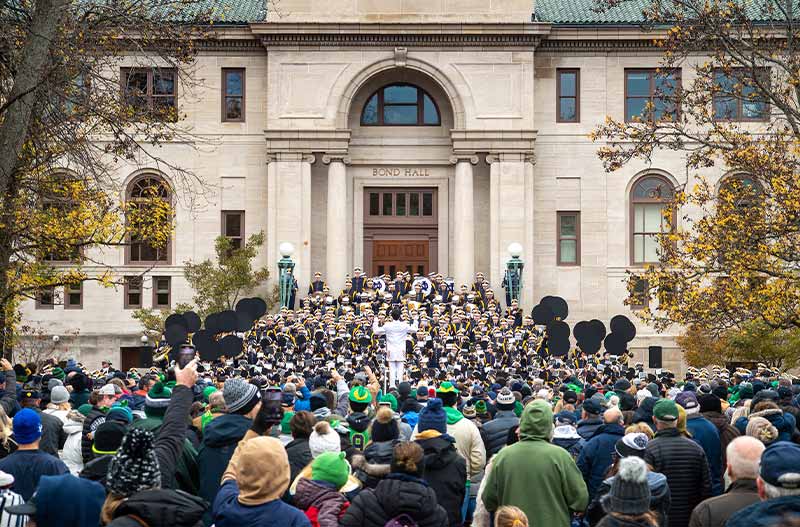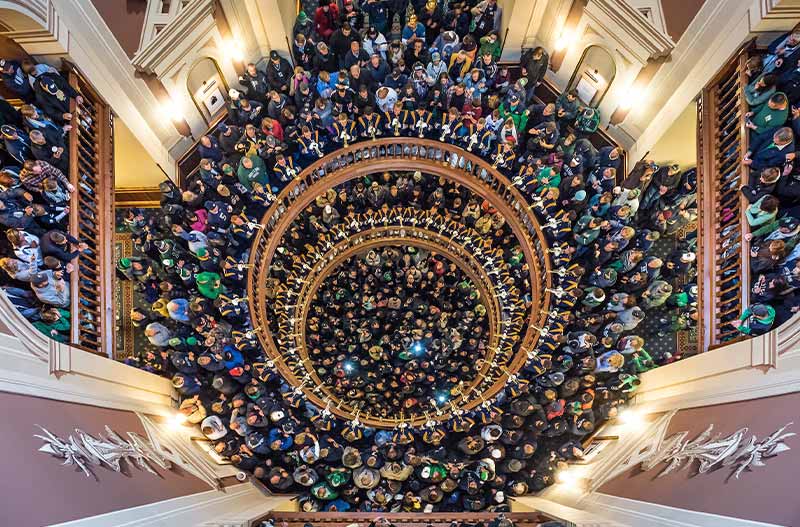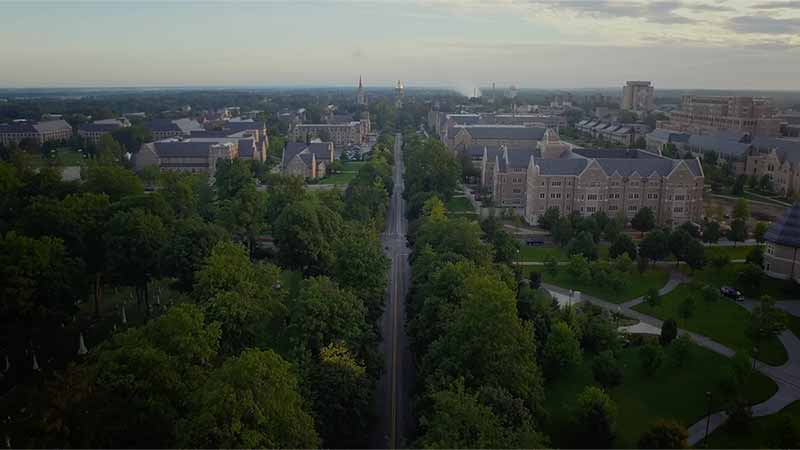The University of Notre Dame is steeped in traditions, some of which date back more than a century. Others are more recent, but are no less important in creating the sense of community and character that has defined Our Lady’s University for the people who study, work, and visit here.
Campus Community
Notre Dame has a longstanding tradition of a vibrant, residential campus life. With no Greek life on campus, residence halls become the place where lifelong relationships are formed. These individual communities combine across campus to create the fabric of the residential life that is a hallmark of the Notre Dame experience.
Each residence hall has what’s known as a “signature event,” used to raise money for a particular charity or cause. The events contribute to a lively campus atmosphere and are some of the fondest Notre Dame memories of the people who organize and participate in them.
The residence halls also facilitate spiritual life on campus. Each hall has a chapel, and Mass is celebrated weekly. For some residence halls, these Masses become traditions unto themselves, as is the case with “Milkshake Mass” at Dillon Hall.
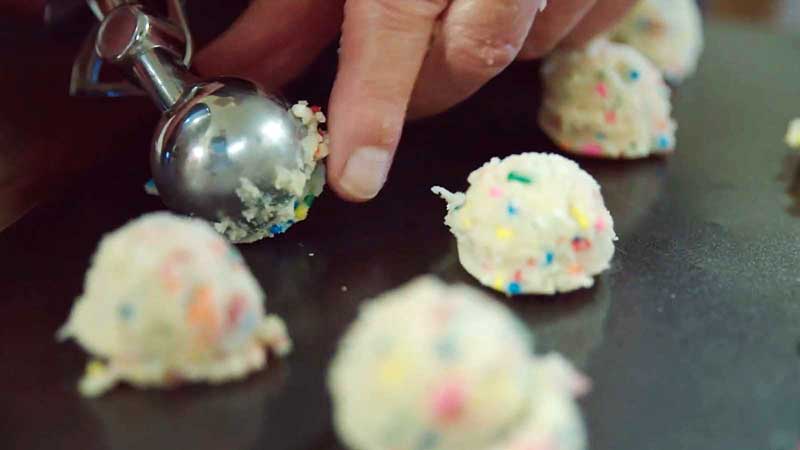
FJ's Cookies
When Fr. Joe Carey moved to Ryan Hall as the priest-in-residence, the move came with a kitchen. Eager to find ways to engage in the community he decided to learn how to bake. Now, residents of Ryan Hall gather in Fr. Joe’s kitchen to bake, sample cookies, brownies and other treats and enjoy time together.
Service
Throughout the years the community involvement of faculty, staff and students alike has formed a tradition unto itself. It starts in the area immediately around campus, where the Notre Dame family contributes more than 90,000 service hours annually. In addition, Notre Dame alumni clubs frequently give of their time in their respective cities around the globe.
The commitment to service is evident in other corners of the University. Notre Dame has a vibrant and longstanding relationship with the branches of the military, as evidenced by its ROTC program, one of the largest in the country. The collective program is celebrated in impressive fashion each year with the Pass in Review.
Another campus tradition has used the sport of boxing to bring relief to the nation of Bangladesh. The Bengal Bouts, established in 1931, is a series of boxing matches that raise money for orphanages and missions run by the Congregation of Holy Cross, Notre Dame’s founding entity. In 1997, the all-female version, Baraka Bouts, debuted. It raises money for Holy Cross missions in East Africa.
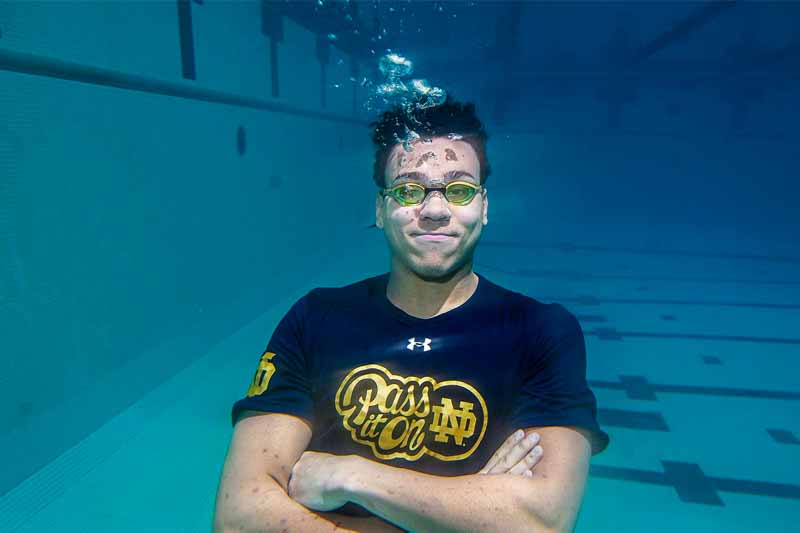
Changing the Face of Swimming
Notre Dame student-athlete leads effort to provide swim lessons to kids from all backgrounds
Other Campus Traditions
Other campus traditions seem to have developed from lore. For instance, undergraduates are known to avoid the steps of the Main Building (the Golden Dome) during their four years here, triumphantly scaling them immediately only after commencement. No one knows for sure the true origin of this tradition, but legend has it that many decades ago a young student was seen loitering on the steps when he should have been in class. A priest reportedly told the student that if he caught him on the steps instead of in class again, he’d be expelled. As these things do, the story took on a life of its own and now all undergrads heed the (clearly hyperbolic if not outdated) warning.
Similarly, undergraduates refrain from stepping on the grass on “God Quad,” the spiritual center of campus buttressed by the Basilica of the Sacred Heart, because legend has it offenders will not pass their theology course requirement.
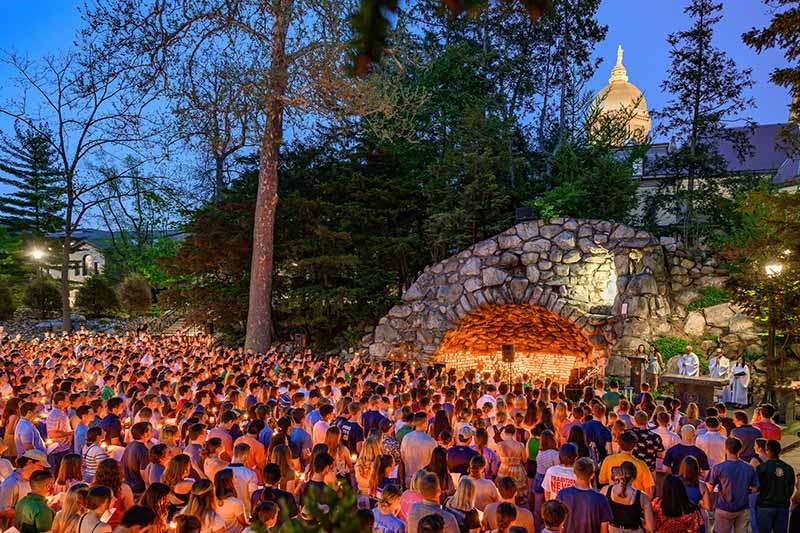
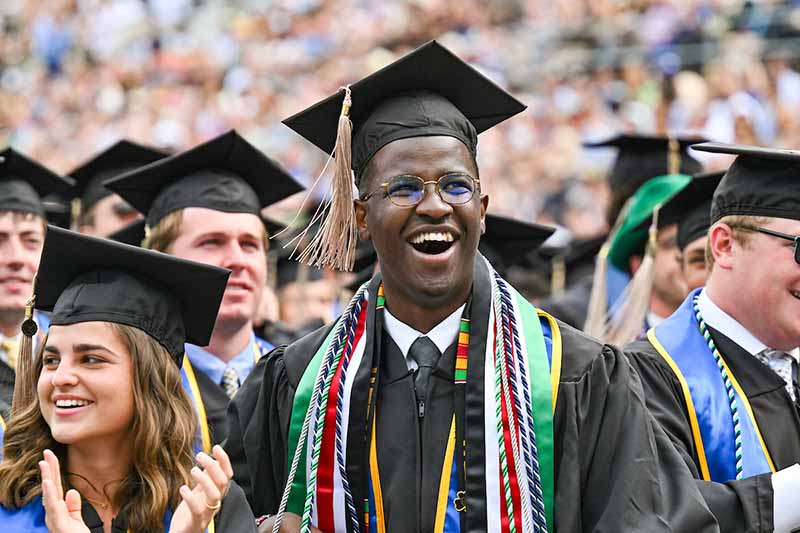
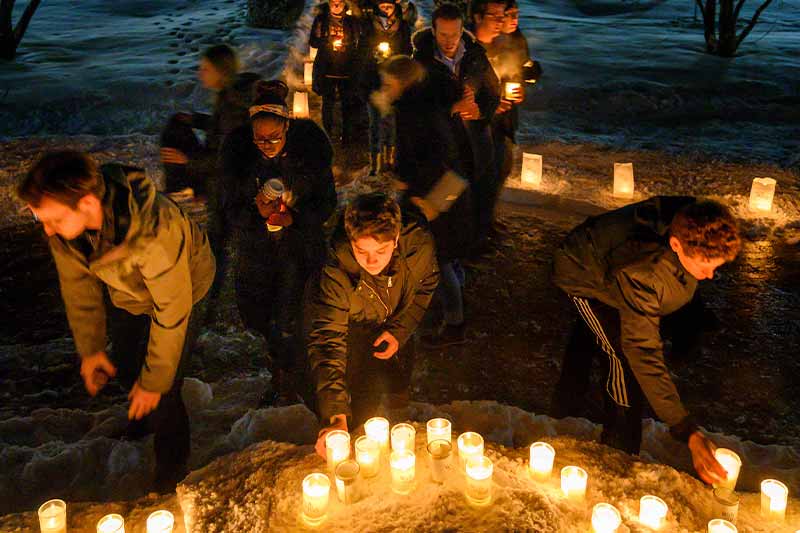
Each year, Commencement heralds a series of traditions all its own. After finals, undergraduates move out and Senior Week begins, full of social gatherings and organized events that celebrate the four years of hard work accomplished by soon-to-be graduates. On the Thursday before Commencement, seniors head to the Grotto for what’s known as The Last Visit. Here, they light candles and hear words from the University president, and reflect on this pivotal moment in their lives.
Recently, a new campus tradition seeks to challenge the Notre Dame community to continue the important work of inclusion. Walk the Walk Week, held in conjunction with Martin Luther King, Jr. Day, begins with a candlelight prayer service in the Main Building Rotunda. The week also includes a Celebration Luncheon, which features an address from a prominent figure. Past keynote speakers include David Robinson, Judge Ann Claire Williams, and Freedom Rider Diane Nash. The week also features events designed to advance the campus dialogue around diversity and inclusion.
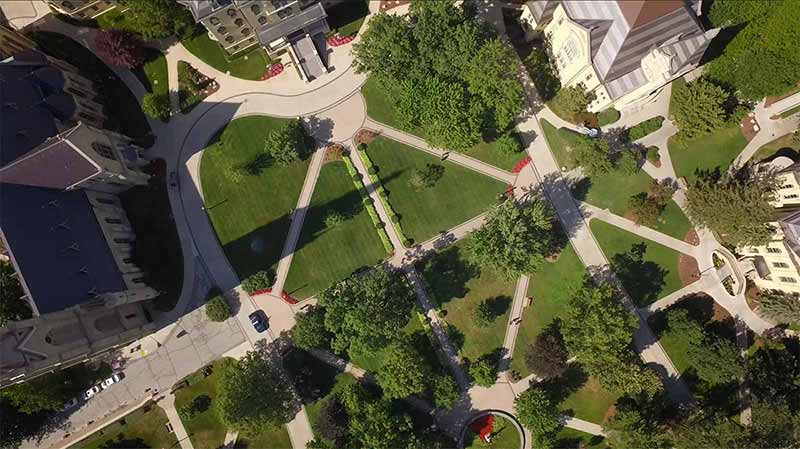
A Tradition of Firsts
Notre Dame’s research enterprise has charted unprecedented growth in recent years, but scholars have long since created knowledge at Our Lady’s University.
In 1882, an ambitious Notre Dame student named Albert Zahm built what might have been the first wind tunnel in the United States so that he could study the lift and drag of various wing shapes. Zahm built the hand-driven contraption by removing the vibrating screens from a farmer’s winnowing blower. Two decades before the Wright brothers’ famous flight in 1903, Zahm was among the first to conclude that slender, concave surfaces shaped like a bird’s wing would make the best wings and propellers.
In 1899, professor Jerome Green and his electrical engineering assistants were experimenting with wireless telegraphy. After a series of experiments in Science Hall, Green transmitted a message a mile away to Saint Mary’s College. Scholastic reported: “This is the farthest distance a message has been sent in this country as far as we know and the boys in the scientific department feel highly elated over their success.”
In another first, Rev. Nieuwland, C.S.C., working in his lab in the Chemistry Building (now Crowley Hall, just south of LaFortune), successfully polymerized acetylene into divinylacetylene, a formulae which DuPont later used in developing neoprene, or synthetic rubber.
Notre Dame is also the first to establish a campus fire department, a university band, and is home to the oldest Catholic law school in the country.
Athletics
Millions of fans identify with the University through its unparalleled athletics tradition. The Fighting Irish.
Some of the fondest memories for many students and Fighting Irish fans involve football home game weekends. The festivities begin Friday afternoon with Trumpets in the Dome, when members of the Band of the Fighting Irish play the Notre Dame Victory March to throngs of people inside the Main Building. Later the traditional pep rally designed to energize the Irish faithful with rousing speeches from players and coaches. On Saturdays, fans line up to wish the Irish players good luck during the Player Walk, two hours and 15 minutes before kickoff. The band performs a concert on the steps of Bond Hall 90 minutes before kickoff, before marching from the Main Building to Notre Dame Stadium. As fans file into the House the Rockne built, the band plays “Hike, Notre Dame,” as well as the Victory March, followed by the playing of America, the Beautiful and the National Anthem. Then it’s time to say “Go Irish!” as the team takes the field.
A Tradition of Progress
Perhaps the most important part of tradition is the sense of grounding it provides as we look to the future. Notre Dame is a place with deep roots that provide sturdy footing in times good and bad. It is the attachment to the place and what takes place here—in the lab, in classroom, in the residence halls, and on the field—that empowers the Notre Dame community to tackle new challenges with confidence and boldness.
Throughout the years, Notre Dame has sought to bring knowledge into service of justice. That has historically led us into many arenas of academic and social endeavor, but today, the calling and mission of the University is perhaps best described in three focus areas.
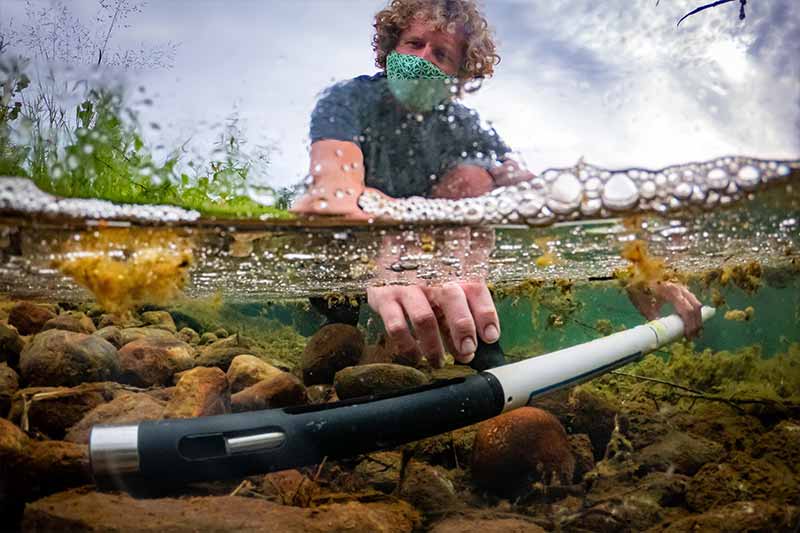
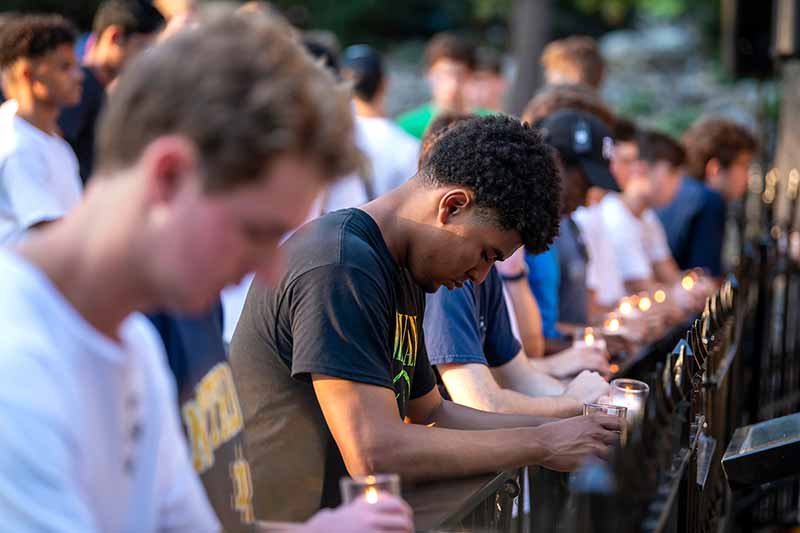
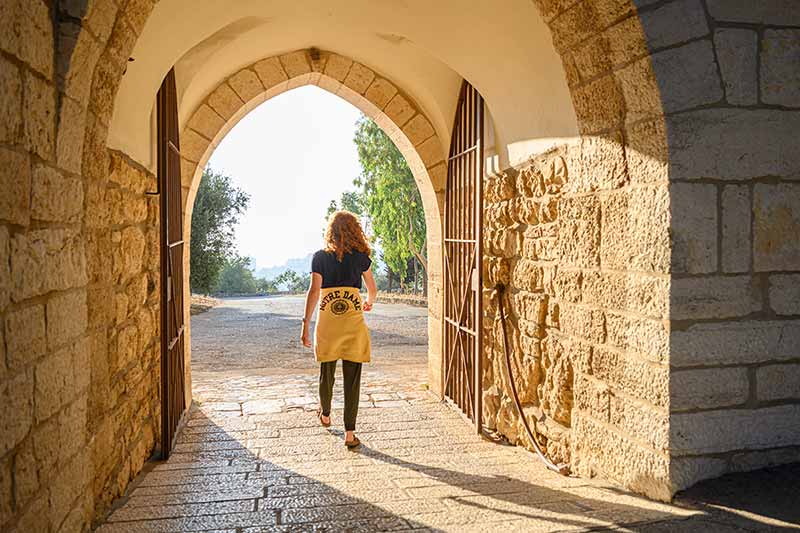
The work of the University is to train young people and create knowledge to help a world deeply in need. Notre Dame is a place that uses tradition as a foundation for its life and work. Our intellectual and spiritual heritage propels us forward.
